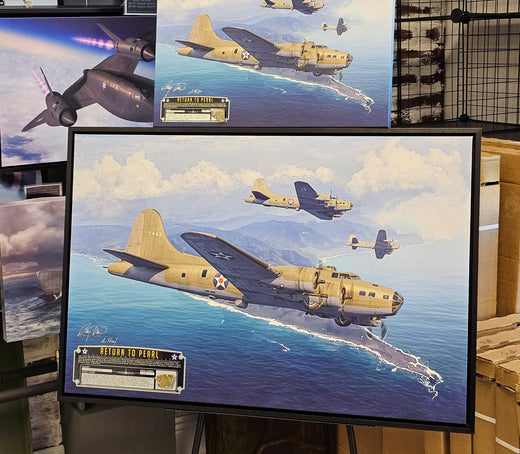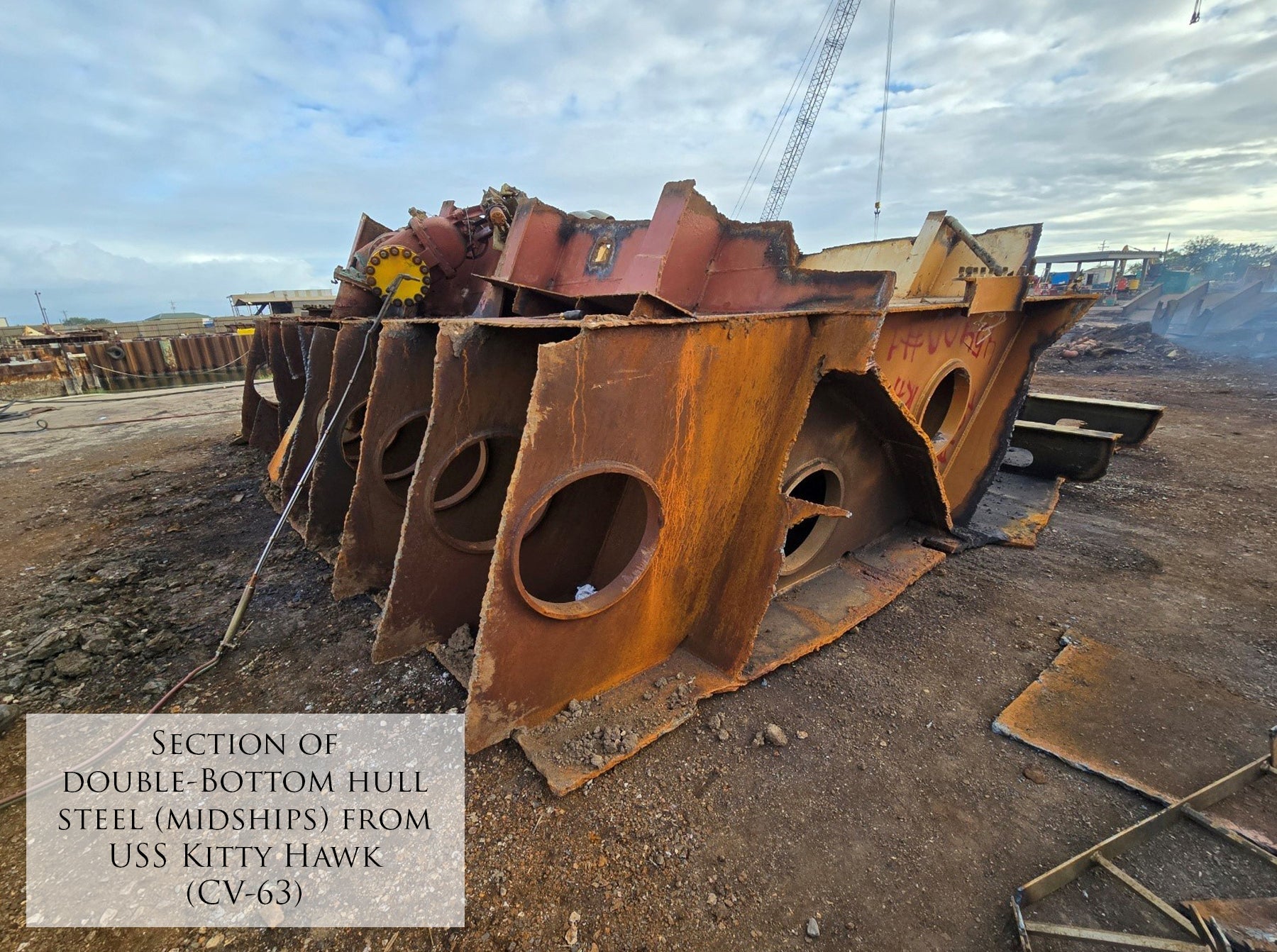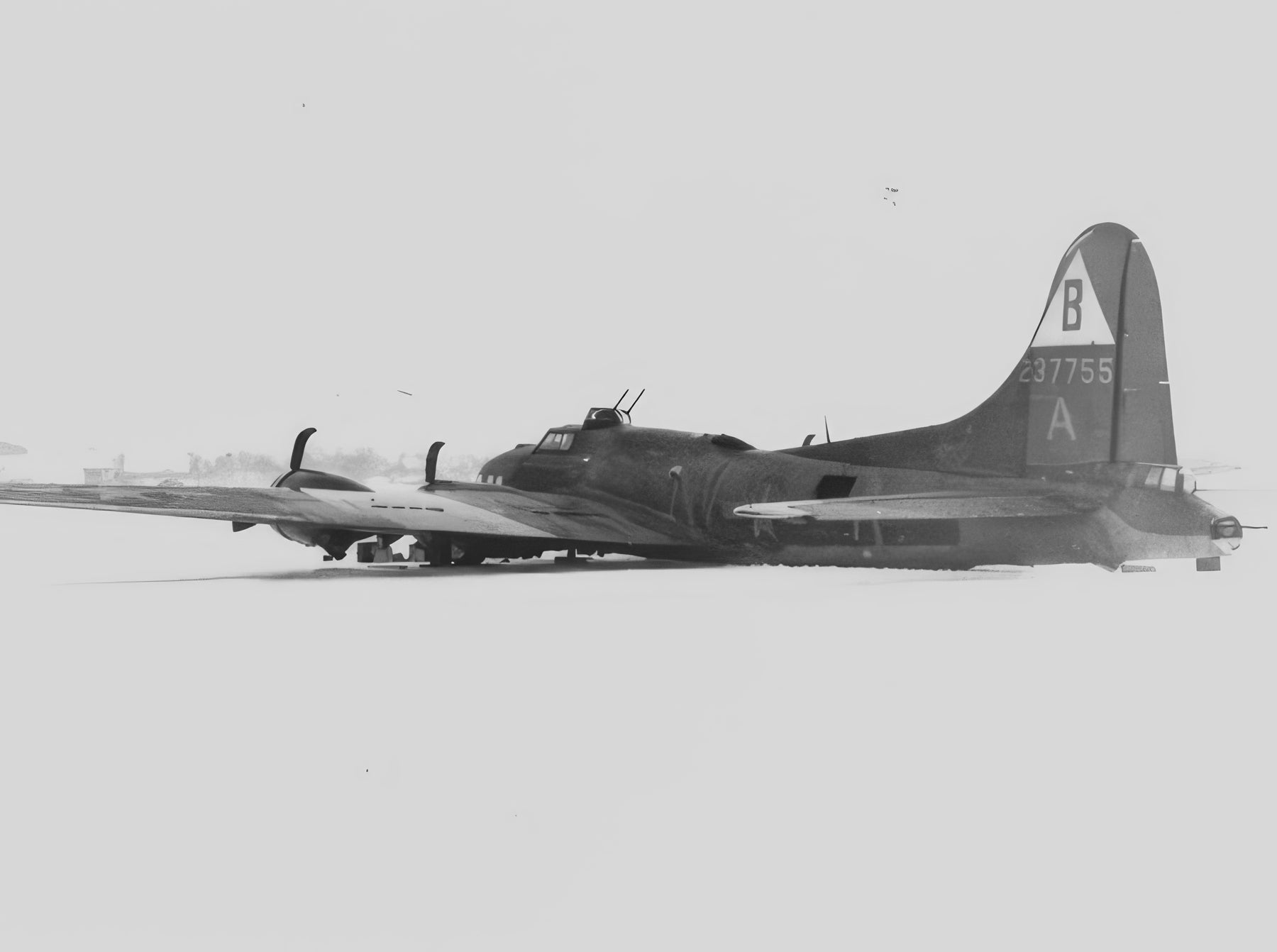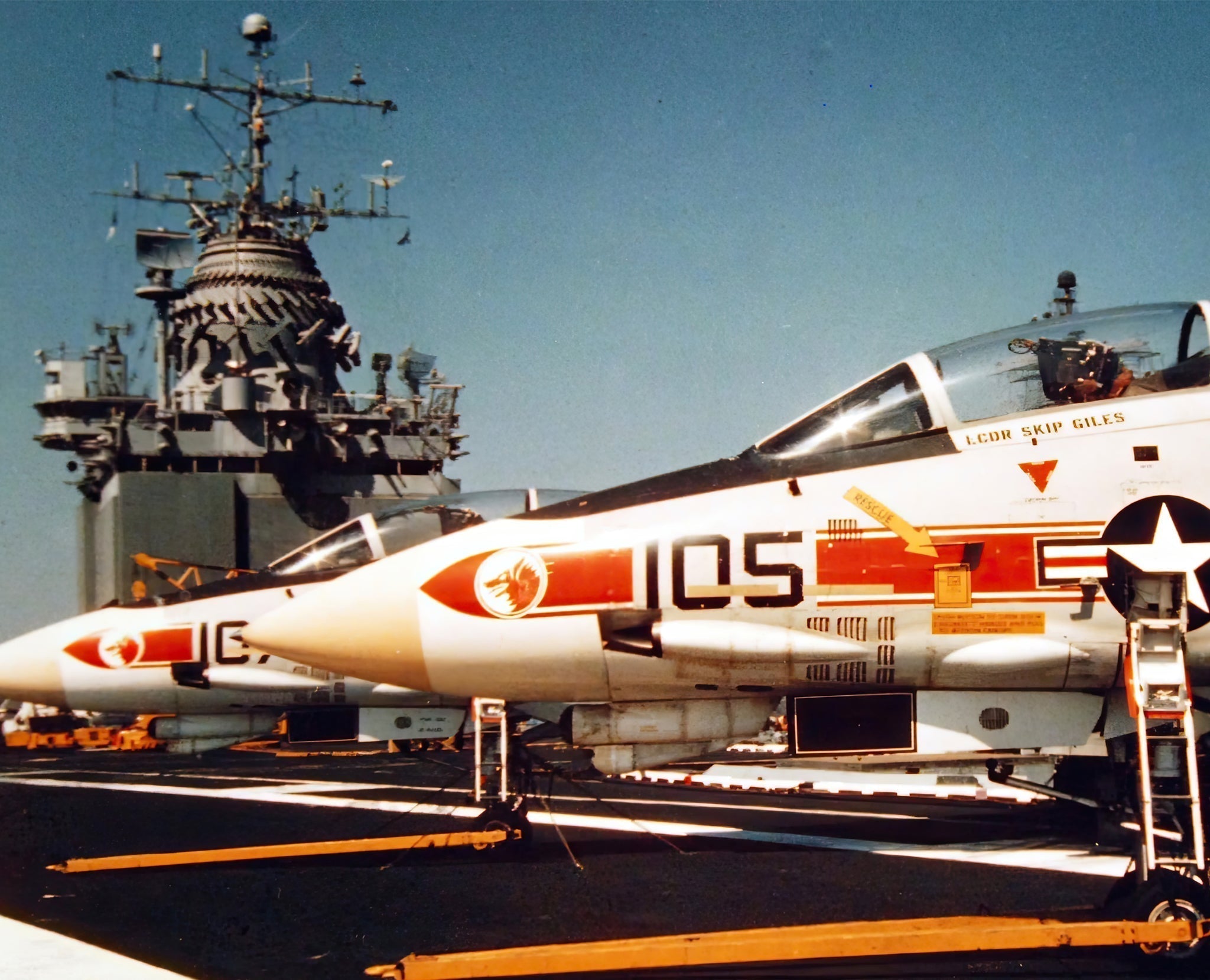This fine art print by artist Craig Tinder depicts a flight of three B-17E Flying Fortresses rounding the landing pattern to deliver much needed supplies and equipment - one of the first landings after the attack on Pearl Harbor. This limited edition canvas series includes an actual fragment of B-17E 41-2443.

Artist Craig Tinder with fragments of B-17E 41-2443 and canvas artwork at Aces In Action - Orlando, Florida
Details About the RELIC
In the 1980s, aluminum relic fragments from B-17E 41-2443 were recovered from wreckage from the crash site on Mount Keahiakahoe. These fragments are now displayed as enduring reminders of the sacrifices made by the heroic crews who flew these bombers, contributing to the ultimate Allied victory in World War II.
While portions of the wreckage—including the main landing gear and structural pieces—remain at the original crash site on the mountainside, these small fragments serve as a tangible tribute to the courage, dedication, and resilience of those who flew in defense of freedom.
 Outer aluminum skin with original early war FS Number 41 Olive Drab and interior armor of B-17E 41-2443
Outer aluminum skin with original early war FS Number 41 Olive Drab and interior armor of B-17E 41-2443
 Upclose detail of aluminum skin fragment
Upclose detail of aluminum skin fragment
The Story Behind the Print
18 December 1941 - B-17E 41-2443 was part of a formation of B-17 Flying Fortresses rounding Ka'ena Point, Oahu, on approach to land at Hickam Field, delivering much-needed reinforcements to the recently devastated Pearl Harbor. This mission marked one of the first steps in a significant U.S. military buildup in the Pacific, aiming to restore and fortify American defenses after the Japanese attack just days earlier. Assigned to the 11th Bombardment Group, 42nd Squadron, B-17E 41-2443 had no known nickname or nose art, but it became notable for its role in anti-submarine operations, a critical priority given the threat of Japanese forces in the area.
 B-17E 41-2443 fresh from the factory flies along the Cascade Mountain Range. One of the few known photographs of the aircraft
B-17E 41-2443 fresh from the factory flies along the Cascade Mountain Range. One of the few known photographs of the aircraft
In the months that followed, this aircraft continued to serve the Pacific Theater, flying patrols to intercept and deter Japanese submarines. On the night of 5 April 1942, B-17E 41-2443, piloted by 1st Lt. Ward Cox, Jr., departed from Hickam Field on a night patrol to locate a Japanese submarine believed to be refueling flying boats responsible for a recent bombing raid on Mt. Tantalus. Tragically, the aircraft never completed its mission; returning from patrol with bombs still on board, it crashed into the cliffs of Mount Keahiakahoe near Nu'uanu Pali on Oahu.
 B-17E 41-2443
B-17E 41-2443
Built in close succession to B-17E 41-2443 was another significant aircraft, "Swamp Ghost," serial number 41-2446, constructed just three aircraft later. Like 41-2443, Swamp Ghost was part of the early B-17E production series, destined for the Pacific Theater to support the Allied response to escalating threats. Swamp Ghost’s story became legendary after it crash-landed in an isolated swamp in Papua New Guinea in 1942, where it remained undisturbed for decades, symbolizing the endurance of these early Flying Fortresses. Today, Swamp Ghost is celebrated as one of the most famous B-17 relics and is preserved as she was found and is now on display at the Pearl Harbor Aviation Museum in Hawaii for visitors to view.
This painting captures the historic approach of B-17E 41-2443 and its squadron mates as they rounded Ka'ena Point, a symbol of resilience and determination at a time when American forces rallied to secure the Pacific Theater. The aircraft and its crew became part of the enduring legacy of those early efforts to safeguard Hawaii and prevent further attacks on American soil.
To purchase or see similar items, visit here.
Commissioned by Museums, Treasured by Collectors





Share:
From Veteran to Buckeye One to Beach City Baby
TADLUR and the Story behind "Through Danger Let Us Ride"